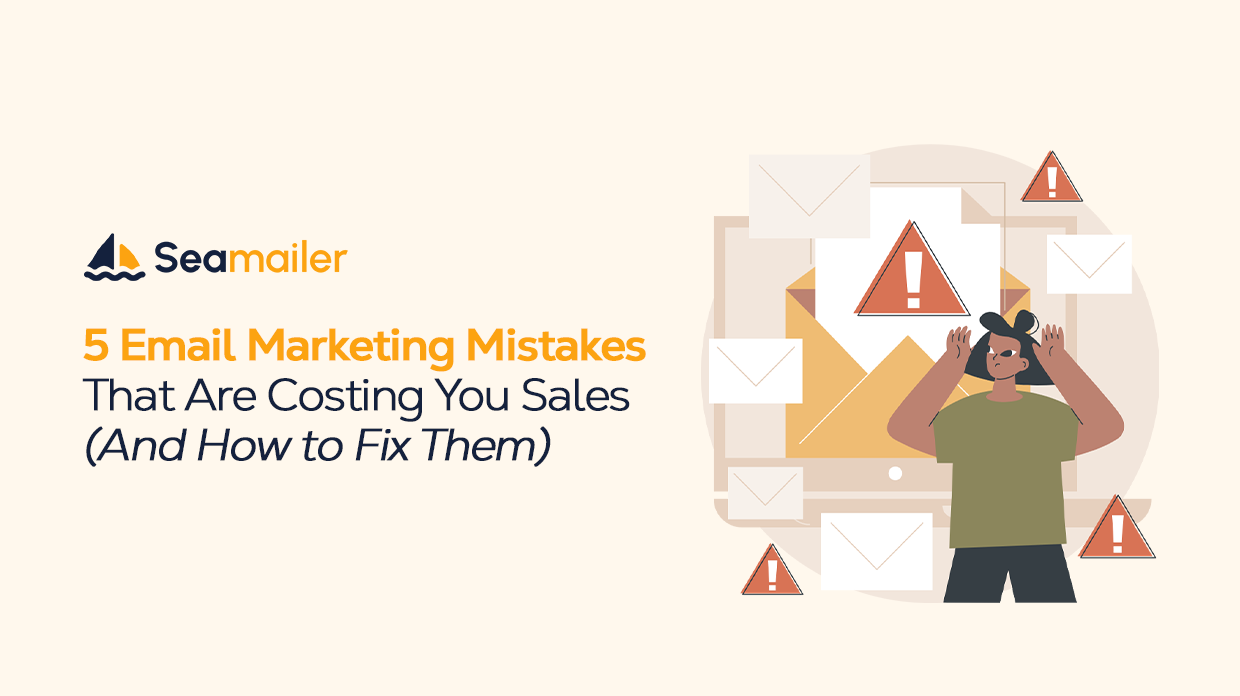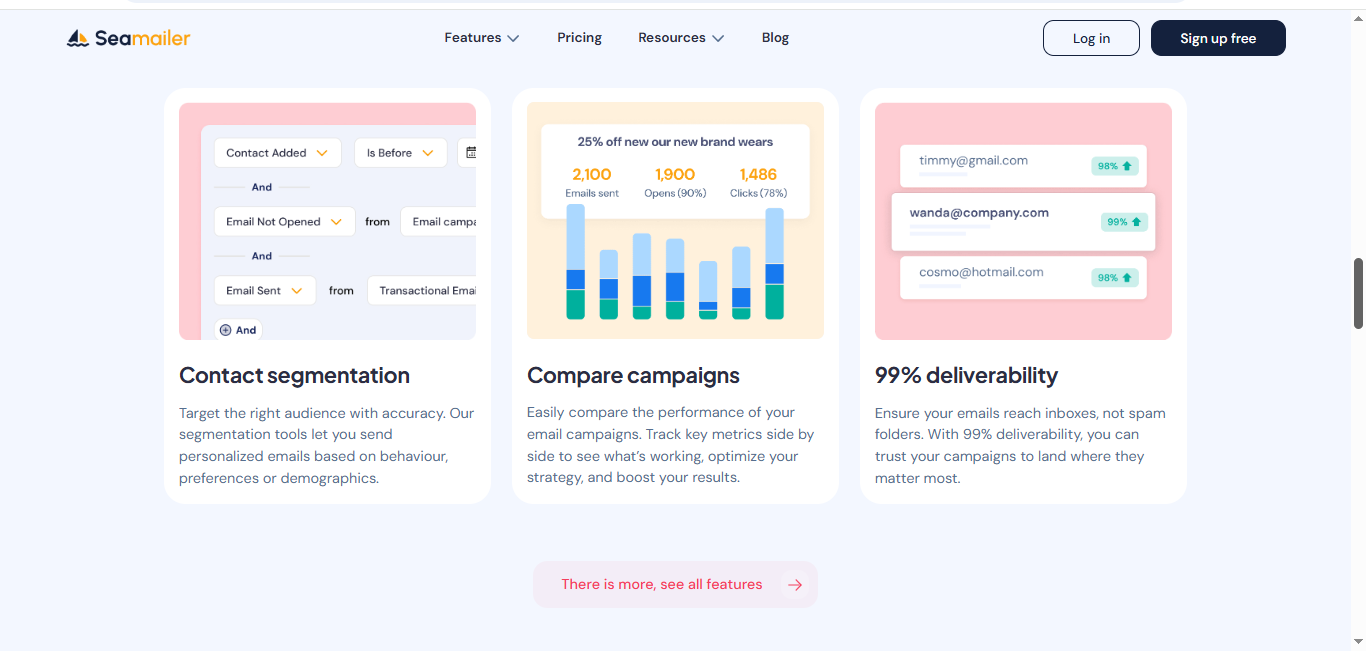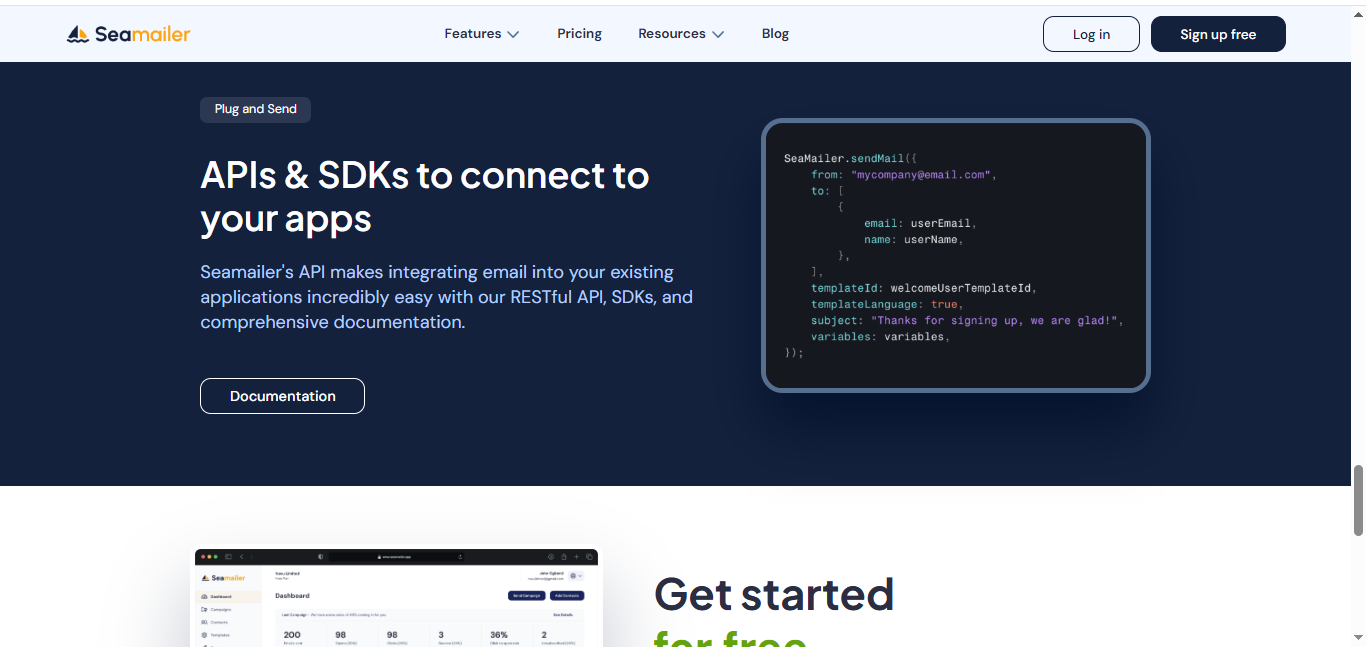5 Email Marketing Mistakes That Are Costing You Sales (And How to Fix Them)

Let’s be honest. We’ve all been there. You hit ‘Send’ on what you’re absolutely convinced is a winning email campaign. You lean back, envisioning the flood of sales notifications... and then, crickets. A decent open rate, maybe, but the click-throughs? Pitiful. The conversions? Non-existent.
You spend hours building your list, crafting your copy, and checking your analytics. So why is this powerhouse channel—the one that consistently delivers the highest ROI—failing to translate into tangible sales for your business?
As someone who has been deep in the trenches of content and email strategy for years, I can tell you this: the problem isn't the channel itself. It’s almost always a handful of fundamental, yet rampant, mistakes that have become so common they are almost invisible.
These aren't rookie errors. These are subtle, strategic missteps that act like a slow leak, silently draining revenue from your business. The good news? They are completely fixable.
We're going to dive into the five most egregious email marketing mistakes that are costing you sales, and more importantly, I'm going to give you the real-world, human-centric solutions to turn that leak into a geyser of conversions.
Mistake #1: Treating Your Entire List as One Undifferentiated Blob
The single biggest mistake I see, and the one with the highest cost, is the "Batch and Blast" approach. It’s the digital equivalent of shouting a generic offer into a stadium of a million people, hoping a few dozen of them happen to need a slightly discounted widget right now.
Your email list is not a homogenous blob. It's a vibrant, diverse collection of individuals at different stages of their journey:
- The "Window Shopper" who just downloaded your free guide.
- The "Cart Abandoner" who left $150 worth of items behind an hour ago.
- The "Loyal Customer" who just bought your premium product for the fifth time.
Sending the same "20% Off Everything" email to all three of these people is a conversion killer. The Loyal Customer is annoyed by an irrelevant discount, the Cart Abandoner needed a final nudge about their specific items, and the Window Shopper is overwhelmed by a sales pitch when they’re still in the learning phase.
The result? High unsubscribe rates, low engagement, and a massive hit to your deliverability (which means even your good emails start landing in spam).

The Human-Centric Fix: Deep, Behavioral Segmentation
You need to switch your mindset from Mass Communication to Meaningful Dialogue.
The Fix in Action:
- Stop Segmenting by Demographics Alone: Segmenting by gender or location is fine, but it’s 1999 technology. The modern gold standard is Behavioral Segmentation. You must group subscribers based on their actions, their interests, and their position in your sales funnel.
- Tier 1: Engagement Level: Have they opened an email in the last 90 days? If not, move them to a 'Re-engagement' sequence, not your primary promo list.
- Tier 2: Purchase History/Value: First-time buyer? VIP with $5k spent? Different segments. The VIP gets an exclusive preview of a new product, not a generic coupon.
- Tier 3: Website Action: Visited Product Page X but didn't buy? Abandoned cart? Downloaded the 'Beginner' guide? They each get a unique, highly relevant follow-up email.
- Utilize Automation for Nurturing: Set up automated sequences (using your email service provider’s tools) to instantly respond to behavior. A user downloads your e-book? Trigger a 3-part educational sequence before you send a sales email. This builds trust, establishes authority, and warms the lead.
- Personalize the Core Message: With smart segmentation, true personalization is easy. The subject line can be:
"Name, ready to finish your order?" for the cart abandoner, or "An exclusive gift for our best customers like you!" for the VIP. This subtle shift makes the message feel like a personal recommendation, not a mass advertisement.
By segmenting, you transform a generic broadcast into a series of micro-conversations, which dramatically increases relevance, trust, and ultimately, sales.
Mistake #2: The Dreaded Vague and Invisible Call-to-Action (CTA)
You’ve written a brilliant email. The copy is tight, the offer is compelling, and the design is clean. But where is the reader supposed to go? If your Call-to-Action (CTA) is buried in the third paragraph, looks like a hyperlink to a legal document, and uses wishy-washy language, you’ve essentially hidden the cash register.
A poor CTA is the rope-bridge between interest and sale. If it’s weak, readers just turn back.
Common CTA Sins:
- Vagueness: "Click Here," "Learn More," "Check it Out." These are passive and fail to convey the value of the destination.
- Invisibility: A tiny, light-blue hyperlink lost in a sea of black text.
- Too Many Options: Having three or four different buttons or links in a short email. This creates analysis paralysis. A confused mind always says no.
The Human-Centric Fix: Single-Minded Clarity and Urgency
Every single email you send must have one primary objective and one dominant CTA. If you can’t answer the question, “What is the one thing I want the reader to do after reading this email?” before you hit send, you’ve already lost the sale.
The Fix in Action:
- Make the Button Pop (Visually and Strategically):
- Color & Size: Use a contrasting, brand-appropriate color for your main CTA button. Make it large enough to be easily tapped on a mobile device (where over 50% of emails are opened).
- Placement: Place the primary CTA high enough to be seen without excessive scrolling (the 'above the fold' of your email) and repeat it once at the end if the email is long.
- Use High-Value, Action-Oriented Language: Your button copy must be benefit-driven, not action-driven.
- Bad: Click Here.
- Better: Shop Now.
- Best (High-Value): Get My Free Template, Claim Your 20% Off, Start Your 7-Day Trial, or Reserve My Seat.
- Harness the Power of One: Focus. If you're promoting a new product, every piece of copy, every image, and every link should funnel the reader toward that single CTA. If you must include secondary links (e.g., to your social media), relegate them to the footer, far away from the main conversion path.
Clarity trumps cleverness. Make the next step the most obvious, compelling thing on the screen.
Mistake #3: Ignoring the Mobile Experience (The Broken-Email Blooper)
Here’s the reality: more than half of all emails are opened on a mobile device. If your beautifully designed, multi-column, high-resolution-image-laden email looks like a broken mess on a smartphone, you’ve already failed 50% of your audience. They're not going to pinch, zoom, or scroll sideways to figure out what you're trying to sell them. They will simply hit delete.
The broken-email blooper isn't just frustrating; it's a profound display of unprofessionalism and a lack of respect for the recipient's time.
The Human-Centric Fix: Mobile-First, Single-Column Design
You need to stop designing for a desktop monitor first and start designing for a thumb-sized screen. This is a crucial shift in perspective.
The Fix in Action:
- Prioritize Responsive Design: This is non-negotiable. Your email service provider must offer a genuinely responsive template builder. This means that when viewed on a phone, the multi-column layout automatically collapses into a clean, easy-to-read single-column stack.
- Keep Images and Text Balanced:
- Text Size: Ensure your body font is at least 14pt (ideally 16pt) for easy reading on a small screen.
- Images: Keep image file sizes small for quick loading on mobile data. Use images sparingly, ensuring the core message can be understood even if images are blocked or slow to load. Use clear, descriptive Alt Text for every image.
- White Space: Embrace generous white space. It helps separate elements, draws the eye to your key points, and prevents the email from feeling cluttered or overwhelming on a tiny screen.
- The "Thumb-Friendly" CTA: As mentioned in Mistake #2, your button needs to be easily tapped. Ensure there is ample padding around it so a person with an average-sized thumb doesn't accidentally click a link or button right next to it.
- Reference to Seamailer: This is where a robust, modern platform becomes your ally. Tools like Seamailer are specifically built with a mobile-first ethos. Their drag-and-drop editors and pre-built templates ensure that your design is automatically responsive and passes mobile litmus tests before you even hit send. This eliminates the technical guesswork and ensures your email lands perfectly, regardless of the screen size.
Mistake #4: Writing for Your Ego, Not Your Audience’s Pain
I can’t count how many emails I've opened that start with: "We are thrilled to announce that our company,
CompanyName
, has launched its new, industry-leading, award-winning, state-of-the-art product,
ProductName
!"
This is the sound of a customer’s delete button being pressed.
Nobody cares about your company’s internal achievements, your history, or your feature list. They care about themselves. They open your email with one, silent question in mind: “What’s in it for me?”
When you write from your company’s perspective (your ego), you produce self-serving noise. When you write from your audience’s perspective (their pain/desire), you create value and drive action.
The Human-Centric Fix: Focus on Transformation and the "You" Factor
Shift your entire perspective from Features to Benefits, from "We" to "You." Every email should promise a transformation that solves a specific problem or fulfills a specific desire your audience is currently feeling.
The Fix in Action:
- Lead with the Pain Point in the Subject Line: Forget the generic "New Product Launch." Lead with a question or a statement that hits their problem head-on.
- Ego Subject: We Launched a New Productivity App.
- Human Subject: "Name", Stop Losing an Hour a Day to Email Clutter.
- Use the "So What?" Test: After you mention a feature, ask yourself, "So what?" and answer it immediately.
- Feature: "Our new widget has a reinforced titanium housing."
- So What? (Benefit): "So you can drop it 100 times without a scratch. Stop buying replacements!"
- Tell a Transformation Story: People connect with stories, not sales pitches. Start the email with a brief, relatable narrative about a customer (or you) who was struggling with a problem (the audience's pain point), and how your product/service provided the simple, effective solution (the transformation). This makes the sale feel like a shared solution, not a pushy transaction.
- Embrace the Casual, One-to-One Tone: Write like you're sending a quick, helpful message to a single friend. Use contractions, short sentences, and a conversational flow. Ditch the corporate jargon. This makes your content feel real and effortlessly eliminates the AI-written feel that kills trust.
Mistake #5: Setting a Low Bar for Deliverability (The Spam Folder Abyss)
You can write the most brilliant, segmented, mobile-friendly email in the world, but if it lands in the spam folder, it's worth zero.
This mistake is highly technical, but it's the invisible wall costing you 100% of the sales from those subscribers. Deliverability—the chance your email lands in the inbox—isn't just luck; it's a reflection of your reputation as a sender.
Common Deliverability Sins:
- List Rot: Continuing to email old, unengaged, or spam trap addresses. This signals to ISPs (Internet Service Providers like Google and Microsoft) that you are a careless sender (or a spambot).
- No Authentication: Missing critical technical setups like SPF, DKIM, and DMARC (the digital signatures that prove you are who you say you are).
- Ignoring Engagement Metrics: Not noticing when your spam complaints or hard bounce rates spike.
The Human-Centric Fix: Protect Your Sender Reputation Like Gold
Your sender reputation is everything. It takes months to build and minutes to destroy. This fix requires discipline, list hygiene, and using a reputable platform.
The Fix in Action:
- Ruthless List Hygiene (The Great Purge): This is the most important step. Don’t be afraid to delete unengaged subscribers. If a contact hasn't opened an email in 6 months, run a 'Last Chance' re-engagement campaign. If they don't respond, cut them loose. A smaller, highly-engaged list is infinitely more valuable than a large, dead one.
- Always Use a Double Opt-in (DOA): Make new subscribers confirm their email address after they sign up. This prevents typos, stops spam bots, and ensures you're only emailing people who truly want to hear from you. This simple step is a massive boost to your sender reputation.
- Technical Foundation (The Platform Matters): Ensure your email service provider handles the complex authentication behind the scenes. This is another area where powerful platforms shine. Tool like Seamailer invest heavily in high-level server infrastructure, advanced deliverability monitoring, and technical standards (like those crucial SPF/DKIM records) to ensure your emails bypass the spam filters and get straight to the inbox where they can convert. Don't cheap out on your delivery service—it’s the vehicle for your sales.
- Monitor Your Metrics: Regularly check your spam complaint rate (which should be near 0.01%), open rate, and bounce rate. High complaints or bounces mean you need to immediately pause and clean your list or adjust your content.

Conclusion: Stop Draining Your Sales Funnel
Email marketing is still, hands down, the most powerful and personal digital marketing channel available. But its power is realized only when you stop treating it like a broadcast medium and start treating it like a one-on-one conversation.
The five mistakes we’ve covered—treating the list as one entity, hiding the CTA, neglecting mobile, writing self-centered content, and ignoring deliverability—are all ultimately about failing to respect the individual on the other end.
By embracing a human-centric, mobile-first, and segmented strategy, you stop actively costing yourself sales and start building the kind of trust and relevance that converts casual interest into lifelong customers.
The technology is there to make this easy. Whether you're leveraging the advanced segmentation and deliverability features of a platform like Seamailer or simply writing your next subject line with a genuine focus on your customer’s transformation, the change starts with your mindset.
The time for "batch and blast" is over. The time to talk to your customers like real people, solve their problems, and watch your sales soar, is now.

